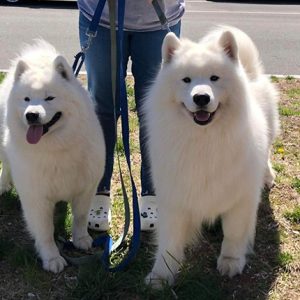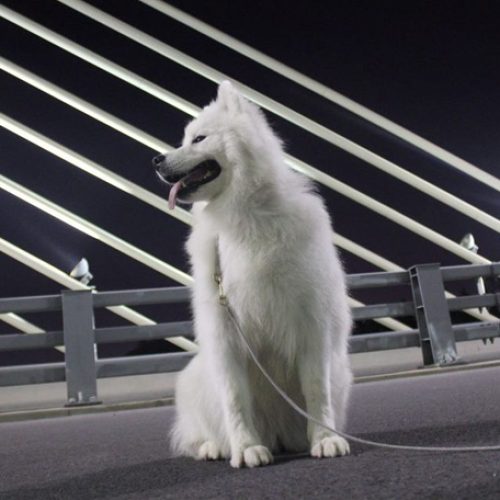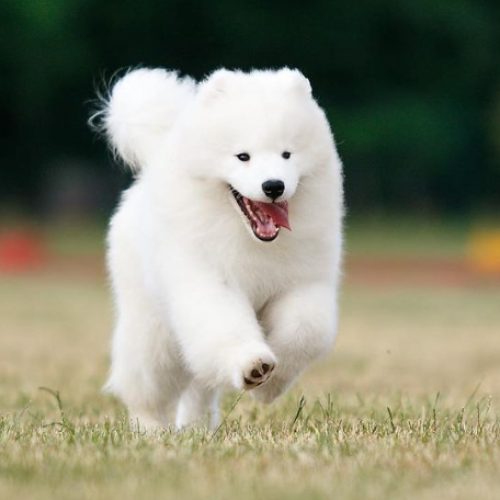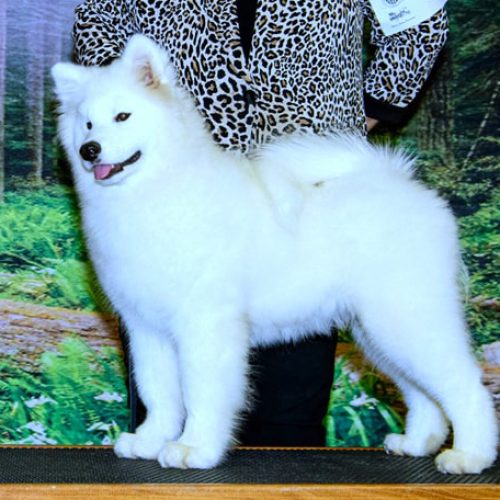If you never had a Samoyed or just recently brought one home, you’ve most likely done and continue to research everything you need to know about this ancient breed with their trademark “Sammy smile” and silver-tipped shiny white white fur. However, one of the most important and mostly overlooked things that you should know about your Samoyed is their growth and average weights.
The Samoyed Club of America and AKC have two set standards of height and weight for the Samoyed breed. The male Samoyed’s height is from 21-23 1/2 inches. Meanwhile, the female Samoyed’s height is 19-21 inches at the withers. Weight of your Samoyed should also be in proportion to the height. The AKC standard suggests 45-65 pounds for males and 35-50 pounds for females. If your Samoyed is bigger than this, it is not in standard and is most likely not in the best physical condition
Read on to learn how to identify if your Sammy is healthy and living their best life or if they need to lose an extra few pounds.
How to Tell If Your Samoyed Overweight or Underweight?
One big benefit of religiously maintaining your Samoyed’s ideal weight is the possibility of extending your pet’s life for two more years. Since Samoyeds have thick coats, it can be more difficult to assess your Sammie’s body condition by sight alone or in a matter of seconds. Below, I will provide you with more concrete tips on how to discern your Sammie’s body condition.
Underweight Samoyed
You must feel your Samoyed’s ribcage. If you can feel its ribs and there is little to no fat covering, as if they’re just right under the skin, then your Sammie is underweight. Look at your Samoyed from above and from the side. If your Sammie doesn’t have any body fat or very small muscle mass for its size and age, then your pet is underweight. If you can see its waist and abdomen tucked way up and so much narrower than its ribcage, then your dog falls behind the ideal weight.
Ideal Weight Samoyed
Your Sammie has an ideal weight if there is some fat (but not excessive) covering its ribs. You should still feel its rib cage but you can also feel a layer of fat before it. Look at your Samoyed from above. You should be able to see its waist behind its ribs. Now look at your Sammie from the side. You should be able to see its abdomen tucked up.
Overweight Samoyed
Your Samoyed is most likely overweight if you can’t see its waist. View your Samoyed from the side. If its abdomen is distended or saggy, then it needs to lose some weight. Also, if you can’t feel your Samoyed’s ribs, they need to lose weight.
Conclusion
Keeping track of your Samoyed’s growth curve in the various stages of its life and maintaining its ideal weight is quite easy. It requires you to bond with your Samoyed and understand your Sammies physical needs. The most important thing is to provide your Samoyed with physical inspections so that your pup can live a long a healthy life




